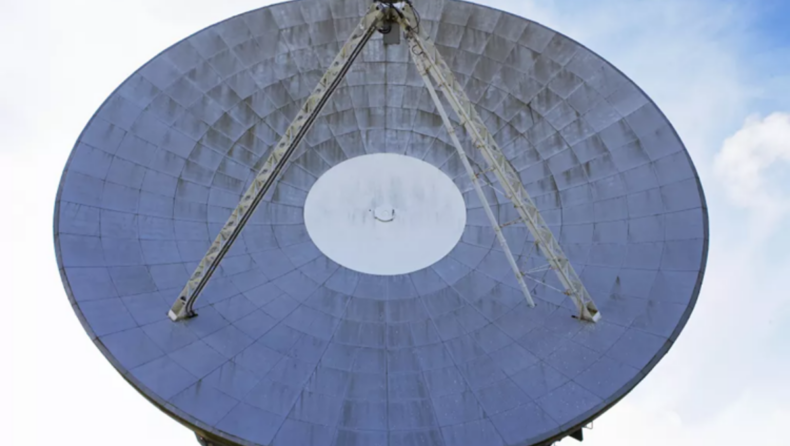Group of scientists, sociologists, historians, anthropologists, and artists have collaborated to create the message, which was inspired by the belief that humanity would benefit from beaming a messages to the stars rather than simply waiting to receive a message from aliens.
METI International is a non-profit organization dedicated to the advancement of science and technology. (METI is an abbreviation for Messaging Extraterrestrial Intelligence, as opposed to SETI, which is an abbreviation for Search for Extraterrestrial Intelligence, which is more passive.)
To coincide with the start of World Space Week, which this year has the subject “Space and Sustainability,” the Goonhilly Satellite Earth Station in Cornwall, United Kingdom, will transmit a climate-change message on Oct. 4 from its location in the United Kingdom.
As Douglas Vakoch, President of METI International, stated on Space.com, “Any extraterrestrials who receive our message will not be astonished to learn about our climatic issue.” “They’ve had decades to keep an eye on our condition from a distance.”
Whether or whether extraterrestrials are aware of our existence, properly interacting with them will be challenging. It is possible that alien species will not comprehend our languages or culture, and that they may even view the cosmos around them in a different way than we do.
In the words of Vakoch, “the main problem of interplanetary communication is to create a shared platform for understanding.” The Goonhilly message will begin with the periodic table of elements to address this issue.
METI International asserted that because the chemical components are ubiquitous, any intelligent extraterrestrials with scientific understanding should be able to recognize the periodic chart. Following the establishment of common ground, the message may go on to outline some of the environmental concerns that we are now confronted with here on Earth.
Considering that the TRAPPIST-1 system is 39 light-years away, we should not expect to get a response for at least 78 years if someone there does notice the message. However, because the universe is 13.8 billion years old and we are relatively recent arrivals on the scene, highly evolved extraterrestrial species will likely be far older than we humans.
The message’s creators believe that this generational divide will provide hope to humanity who are confronting the effects of climate change. Aliens who have survived for millions or billions of years are presumed to have resolved any climate issues they may have faced and to be living in a stable society, according to experts.
If an alien species has managed to survive for millions or billions of years, experts believe that they will have long since solved any climate issues they may have faced and will now be living in a stable society. Hearing from such extraterrestrials may instill faith in us that we can address our climate-related concerns.
Furthermore, Vakoch believes that the aliens may be attracted to hear from a younger species — such as us — who are going through a period in their growth that the aliens’ distant ancestors may have also gone through at some point.
According to Vakoch, “by providing aliens with insight into the mentality of a race that is concerned about its future but is yet willing to reach out, we may be contributing valuable insights
to a civilization that has long ago left behind such instability and uncertainty.” “Perhaps our honest self-reflection will pique someone’s interest enough to elicit a reaction.”
Musical compositions and scientific facts will be used to convey the environmental topic throughout the program. Médecins sans Frontières Internationales (METI) has partnered with the Stihia music festival in Uzbekistan, which is a non-profit project aimed at raising awareness of the drying up of the Aral Sea, which is relied on by local populations for their fishing livelihoods.
Artists who will be performing at the festival will be represented by a selection of tunes selected by the festival’s organizers, which will include tracks such as “Beauty of the Earth” by Soviet electronic music pioneer Eduard Artemyev, “Through the Asteroid Belt” by The Comet is Coming and a selection of tunes by artists who won’t be performing at the festival.
Vakoch acknowledged that the music may be the most difficult portion of the message for aliens to understand, as well as the most difficult component of the message to encode in high-fidelity for transmission.
Nonetheless, he believes that “the musical selections… are arguably the sections of the message that are most likely to urge alien listeners to say, ‘tell us more,'” which he describes as “the most likely to prompt alien recipients to say, “tell us more.”
In 2018, METI International broadcasted the Sónar Calling message, which was timed to coincide with the Sónar music festival in Barcelona. This will be the second interstellar communication that the organization has broadcast; the first being the Sónar Calling message in 2018.
There have been several important interstellar broadcasts, including the renowned Arecibo Message, which was sent into space in 1974, and four messages broadcast into space from the Evpatoria radio telescope in Crimea, which was operated by late Russian radio astronomer Alexander Zaitsev.
Some SETI specialists are opposed to the practice of intentionally transmitting communications to alien life. Because we cannot foresee what the ramifications of initiating contact with technology aliens would be for our civilization, many scholars believe that such interactions constitute unlawful diplomacy that may put people at risk.
To convey a message, the TRAPPIST-1 system is a suitable choice because it is home to seven rocky worlds that circle a red dwarf star, making it an ideal destination. Planet ‘e’, which is the most likely candidate for supporting life as we know it, is one of many potentially habitable planets in the system.
However, it is doubtful that METI International will strike gold shortly. According to Vakoch, “If we receive a response from TRAPPIST-1, we will know that the cosmos is teeming with sentient life.” We may need to send broadcasts like the one sent to TRAPPIST-1 hundred, thousands, or even millions of times before we reach a star that is inhabited by radio astronomers, according to more realistic estimates.
Published by – Supreeti Ghosh













